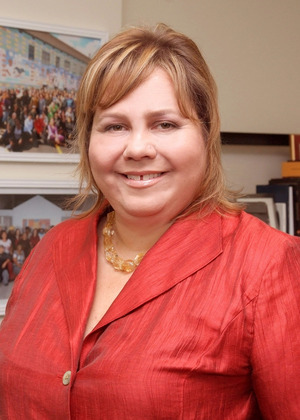
I like to geek out on leader development and effectiveness research. A lot. Almost as much as working with stellar nonprofit leaders. So when I was asked to share on happiness and organizational culture for the UN Day of Happiness, I jumped at the opportunity to chat with two leaders who have created high performing organizations with flourishing cultures. The result is a video presentation that can be watched for free here on the 20th. For Social Impact Geeks only, I am sharing some unique insights from these two interviews.
A bit of background first. Culture is one of those things everyone believes is important, but that most do not attend to well. This problem is exacerbated by the fact that culture is fluid, always evolving, and influenced by a complex variety of factors. Call me Darwin, but the fact is that culture must evolve and flourish to support innovation and tomorrow’s results. A flourishing culture brings with it many benefits: stronger competitive advantage, higher employee satisfaction, and better performance results over time. Yet why do we still struggle with culture change? I believe it is because there’s a gap between what we know conceptually and how we behave. But do not fear! There are leadership practices that when embodied and lived as habits can help fix this disconnect. Let’s take a look at a few of them.
Community and the feeling of home are core to Downtown Women’s Center’s (DWC) rich cultural identity. Lisa Watson, CEO, had the foresight to know that leveraging and elevating culture during DWC’s recent expansion and change was critical to successful growth. Lisa believes defining and putting words to your values and culture is the starting point for catalyzing action. This is the positive practice of being strengths- and values-driven.
As Lisa explains, “culture takes consistent training, education, teambuilding, and communication to have everyone on board. It’s easy when growth is slow. During fast growth you have to take steps to maintain the culture of an organization.” For DWC these steps began by tapping into the organization’s values. How do you better understand values? As part of Blue Garnet’s work with DWC in 2011, we helped perform a culture assessment that engaged all staff, board members, and several residents, program participants, and volunteers. Some questions we asked were:
- What makes DWC, DWC?
- What do you value most about DWC’s existing culture?
- What would you hope to see maintained 50 years from now?
- What makes this place feel like home?
As a result, a staff-led taskforce went forward to identify goals for building and elevating culture, which is now a practice that is ingrained in the way they work. Amazing! For example, each monthly staff meeting starts by discussing one of the organization’s core values and recognizing a staff member who has reflected the values in their work. I wonder if things would have been different had Enron done this?
Lisa takes very seriously her role as CEO as a culture-builder, but she does not rely on “trickle down culture building.” Instead, she ensures that leaders at all levels effectively model and are accountable for building DWC’s culture. Lisa explains, “We take shared leadership so seriously that really everything we do is based around this concept.” An initiative born of this concept is the leadership institute Lisa started for her supervisors this year. The institute is for supervisors to learn management skills, develop their own leadership style, and see firsthand how these things have to do with setting culture. (Shared leadership is one of the four disciplines Blue Garnet believes are critical to building high performing organizations, see more here.)
To wrap up, I asked Lisa what her key learnings were regarding elevating culture. “It takes time and commitment and a lot of trust,” Lisa shared, “and we realized that we needed to prioritize cultural fit as much as technical skills in our hiring process. Getting our hands around this was tough…but in many ways it became simpler. Asking about someone’s leadership style helps you to understand their cultural fit, but so does knowing if you’ll enjoy talking to them at the water cooler!”
Shared leadership is also something Caryn Bosson has built and promoted at the organizations she has helped grow. She relies on the positive practice of emotionally intelligent communication to build trust and open, honest communication between the constituents she works with. As Caryn puts it, “Communication is currency and I believe we create our own wealth in organizations, by generating the money flow, if you will.”
In her work at TreePeople, Caryn shared how powerful it is when senior leaders are able to ask thoughtful questions, admit their limitations, and respectfully discuss challenges. This kind of respectful engagement relies on the skill of empathic listening skill, understanding the emotional and intellectual sides of a conversation. Part of active listening is soliciting feedback about how well your colleagues think you are listening. Do people experience you as being present? Affirming? Communicating supportively?
Like many people drawn to nonprofit work, Caryn understands that most people are running on inspiration and that organizational culture will not flourish unless leaders know how to effectively communicate, share successes, and connect with their team. Positive leaders are energizers and they know how to build emotional connections with others, which they tap into when they need to rally people around change. And it can’t hurt to mention that various studies have found that 90% of top performers have high emotional intelligence and that it is responsible for 58% of job performance.
How can we practice this? Well, when speaking to an employee about a new initiative or goal you can connect it to the organization’s larger purpose. You can also speak to an individual’s sense of pride and commitment in a genuine way, which is often individualized – “Does this person care most about connecting with customers? Or with beating a benchmark? How do I relate this goal to those ambitions?”
Aside from wanting to befriend Lisa and Caryn, I hope you learned a few positive leadership practices from them. Take a look at the video or reach out to us to learn more about the five positive practices leaders can use to impact organizational culture. And tell us, how are you planning to celebrate the UN Day of Happiness on March 20th in your workplace?
Lisa Watson of Downtown Women’s Center
Caryn Bosson of TreePeople


